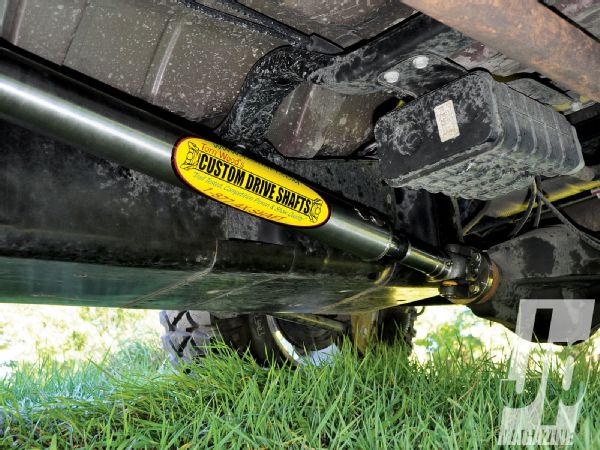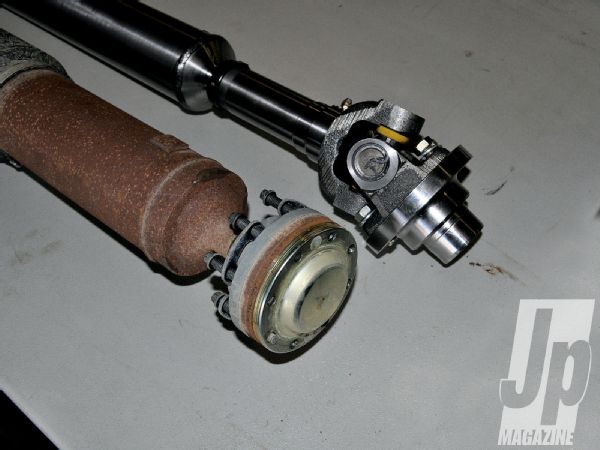
If you own a JK, you're going to want to lift it. And when you do, you're going to be thinking about how much lift, long arms or stock, which wheels, and how much tire. What you're probably not thinking about, and you really should be, is what you're going to do about the driveshafts.

The '07-'10 Jeep Wranglers come with constant velocity (CV) joints at both ends of the rear driveshaft and at the transfer-case end of the front shaft. These work fine at stock angles, but when you lift your Jeep, the driveline angle increases, often beyond what the CV joint was designed to operate within. It's only a matter of time before the boot on the CV joint rips because of the increased angle or contact with trail obstacles, releasing the grease and causing the CV joint to burn up.
This situation is extremely common on lifts of three inches or more, especially on the rear of two-door Wranglers. On four-door Wranglers, the rear shaft is longer so it can tolerate a bit more lift before reaching a fatal angle. But here's another factor that affects all JKs-if you disconnect the front sway bar for maximum suspension travel, the large-diameter front driveshaft will hit the exhaust, ripping the slip-joint boot.
 The factory CV joints in the driveshaft just can't compete with a double-cardan for strength, trail durability, or the angles within which they can operate. Shown are the new Tom Wood's rear driveshaft with the 1350 joint and flange (top), and the stock, pitiful rubber-bootie CV joint (bottom).
The factory CV joints in the driveshaft just can't compete with a double-cardan for strength, trail durability, or the angles within which they can operate. Shown are the new Tom Wood's rear driveshaft with the 1350 joint and flange (top), and the stock, pitiful rubber-bootie CV joint (bottom).
Here's the upgrade you should be drooling over right along with your shiny new wheels and knobby mud terrains: a set of double-cardan shafts from Tom Wood's Custom Drive Shafts. The double-cardan joint can handle greater angles than the factory CV joint, and when the pinion is positioned properly, will eliminate driveline vibration you may not even have realized you had.
We replaced the factory shafts in an '08 JK with a 31/2-inch Nth Degree lift after about 7,000 miles of use. We had banged up the front shaft on the exhaust tube and were starting to get more and more vibrations from the rear. The new shafts from Tom Wood's delivered a smoother running driveline at 70 mph than we had even before the lift and larger tires. Installing the new shafts is pretty straightforward. We went to Unlimited Offroad Centers in Fenton, Michigan, where Justin Whalen gave us some trade tips as he installed the new driveshafts.
PhotosView Slideshow

 PhotosView Slideshow
PhotosView Slideshow


 PhotosView Slideshow
PhotosView Slideshow


